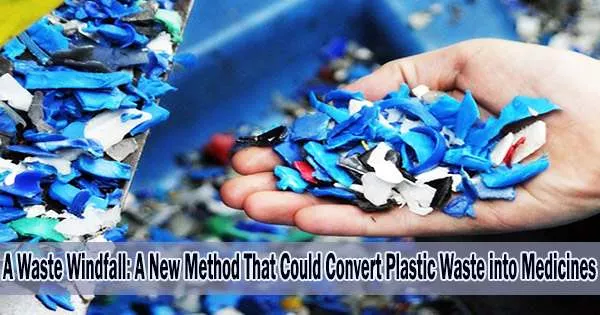22 miles off the coast of Los Angeles, Catalina Island was once a haven for Hollywood elite, smugglers, and silver miners. It now gathers rubbish. The Great Pacific Garbage Patch, a massive accumulation of microplastics and heavier waste that spans more than 1.6 million square kilometers, gathers in its windward-facing harbor. It provides vivid proof of the effects of the world’s expanding plastic output, which is expected to reach 1.1 billion tons annually by 2040.
In response to this issue, USC researchers have developed a process that converts post-consumer mixed plastics in an unprecedented amount of diverse and useful secondary products. This week’s article in Angewandte Chemie describes a two-stage procedure with intriguing potential uses in the creation of pharmaceuticals, raw materials, and other goods.
“Polyethylene is the least recycled of the large-scale plastics the EPA estimates less than 6% is actually recycled and only 30% of the mass is typically recoverable,” said Travis Williams, co-author of the study and professor of chemistry at the USC Dornsife College of Letters, Arts, and Sciences.
“We developed conditions where it is possible to get 83% of the mass of the polymer recovered as discrete, useful products. We can even take a low-density product like a plastic grocery bag and recover about 36% of those discrete monomers that’s unheard of in polyethylene recycling.”
The ultimate goal is developing a method that could be used on a mixture of plastics. Right now, if you go to recycle your plastic waste, there’s only one bin, but there are actually several different classes of plastics. There are systems that sort them, but ideally, we’d like to be able to tackle mixtures of plastics using a similar approach.
Clay C.C. Wang
Keeping plastic’s utility without the environmental devastation
Polyethylene, a material frequently found in packaging, automobile parts, and plastic shopping bags, has significantly improved people’s quality of life and health. The qualities that make plastics valuable, such as their sterility and durability, also prohibit recycling and environmentally beneficial decomposition. Chemical recycling might make polyethylene recycling and remanufacturing more affordable than they currently are.
The researchers recruited numerous student and neighborhood groups to gather raw plastic garbage from Catalina Harbor as samples for this innovative approach. Plastic milk cartons, carryout containers, grocery bags, and other home items were among the waste that was generated.
The researchers then broke the samples down with chemical catalysts and pressurized oxygen to produce chemical groups called diacids in this case, asperbenzaldehyde, citreoviridin and mutilin.
Following the initial stage, the research team introduced the diacids to engineered strains of Aspergillus niduluns, a versatile, easy-to-engineer fungus often utilized in drug discovery. When fed diacids as a carbon source, the fungus produced significant quantities of antibiotics, cholesterol-lowering statins, immunosuppressants, and antifungals all within a week.
“If you look at the biological cycle, that efficiency is very exciting because the process will be cost-sensitive,” said Clay C.C. Wang, senior author of the study and a professor at the USC School of Pharmacy and Pharmaceutical Sciences. “We’re going to make the products in bulk quantities.”
Chemical recycling may have applications beyond polyethylene
The team, in coordination with researchers at the University of Kansas, is exploring whether the method can be applied to other types of plastic.
“The ultimate goal is developing a method that could be used on a mixture of plastics,” Wang said. “Right now, if you go to recycle your plastic waste, there’s only one bin, but there are actually several different classes of plastics. There are systems that sort them, but ideally, we’d like to be able to tackle mixtures of plastics using a similar approach.”





